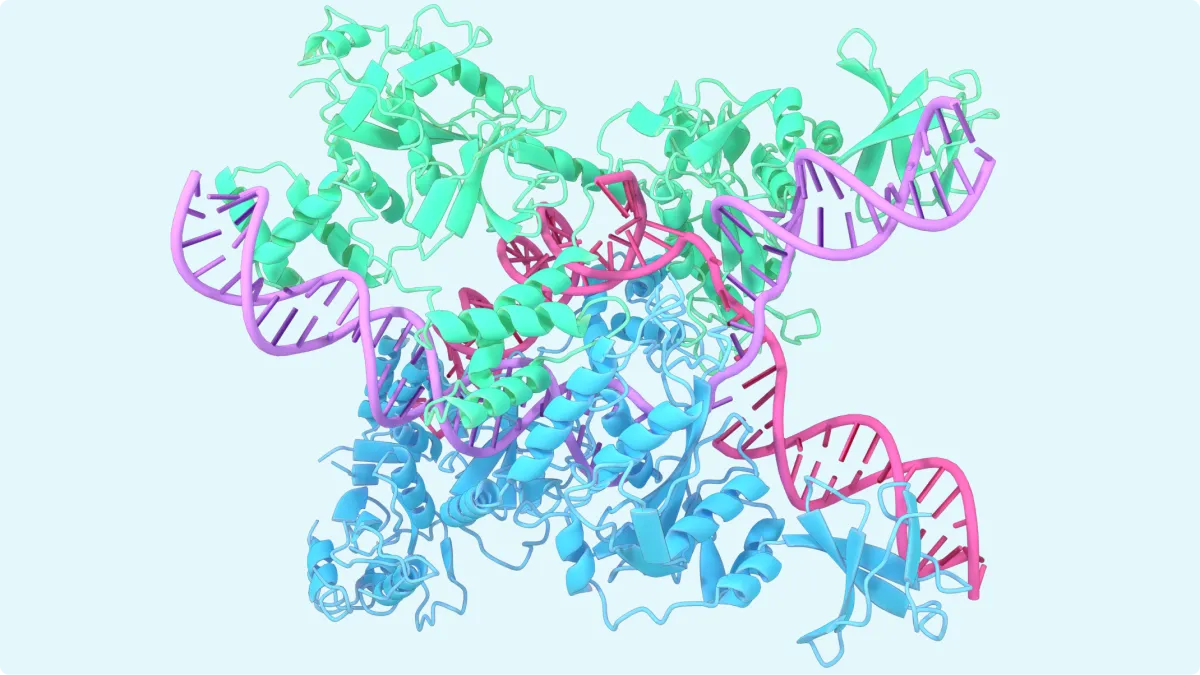AlphaFold 2 is a winner
It’s been one year since we released and open sourced AlphaFold, our AI system to predict the 3D structure of a protein just from its 1D amino acid sequence, and created the AlphaFold Protein Structure Database (AlphaFold DB) to freely share this scientific knowledge with the world.

It’s been one year since we released and open sourced AlphaFold, our AI system to predict the 3D structure of a protein just from its 1D amino acid sequence, and created the AlphaFold Protein Structure Database (AlphaFold DB) to freely share this scientific knowledge with the world. Proteins are the building blocks of life, they underpin every biological process in every living thing. And, because a protein’s shape is closely linked with its function, knowing a protein’s structure unlocks a greater understanding of what it does and how it works. We hoped this groundbreaking resource would help accelerate scientific research and discovery globally, and that other teams could learn from and build on the advances we made with AlphaFold to create further breakthroughs. That hope has become a reality far quicker than we had dared to dream. Just twelve months later, AlphaFold has been accessed by more than half a million researchers and used to accelerate progress on important real-world problems ranging from plastic pollution to antibiotic resistance.
Today, I’m incredibly excited to share the next stage of this journey. In partnership with EMBL’s European Bioinformatics Institute (EMBL-EBI), we’re now releasing predicted structures for nearly all catalogued proteins known to science, which will expand the AlphaFold DB by over 200x - from nearly 1 million structures to over 200 million structures - with the potential to dramatically increase our understanding of biology.

This update includes predicted structures for plants, bacteria, animals, and other organisms, opening up many new opportunities for researchers to use AlphaFold to advance their work on important issues, including sustainability, food insecurity, and neglected diseases.

Today’s update means that most pages on the main protein database UniProt will come with a predicted structure. All 200+ million structures will also be available for bulk download via Google Cloud Public Datasets, making AlphaFold even more accessible to scientists around the world.
“
AlphaFold is the singular and momentous advance in life science that demonstrates the power of AI. Determining the 3D structure of a protein used to take many months or years, it now takes seconds. AlphaFold has already accelerated and enabled massive discoveries, including cracking the structure of the nuclear pore complex. And with this new addition of structures illuminating nearly the entire protein universe, we can expect more biological mysteries to be solved each day.
Eric Topol
Founder and Director of the Scripps Research Translational Institute
AlphaFold’s impact so far
Twelve months on from AlphaFold’s initial release, it’s been amazing to reflect on the incredible impact AlphaFold has already had, and our long journey to reach today’s milestone.
For our team, AlphaFold’s success was especially rewarding, both because it was the most complex AI system we’d ever built, requiring multiple critical innovations, and because it has had the most meaningful downstream impact. By demonstrating that AI could accurately predict the shape of a protein down to atomic accuracy, at scale and in minutes, AlphaFold not only provided a solution to a 50-year grand challenge, it also became the first big proof point of our founding thesis: that artificial intelligence can dramatically accelerate scientific discovery, and in turn advance humanity.
We open sourced AlphaFold’s code and published two in-depth papers in Nature [1, 2], which have already been cited more than 4000 times. We collaborated closely with the world-leading EMBL-EBI to design a tool that would best help biologists access and use AlphaFold, and together released the AlphaFold DB, a searchable database that is open and free to all. Before releasing AlphaFold, in line with our careful approach to pioneering responsibly, we sought input from more than 30 experts across biology research, security, ethics and safety to help us understand how to share the benefits of AlphaFold with the world, in a way that would maximise potential benefit and minimise potential risk.
To date, more than 500,000 researchers from 190 countries have accessed the AlphaFold DB to view over 2 million structures. Our freely available structures have also been integrated into other public datasets, such as Ensembl, UniProt, and OpenTargets, where millions of users access them as part of their everyday workflows.


Comments ()